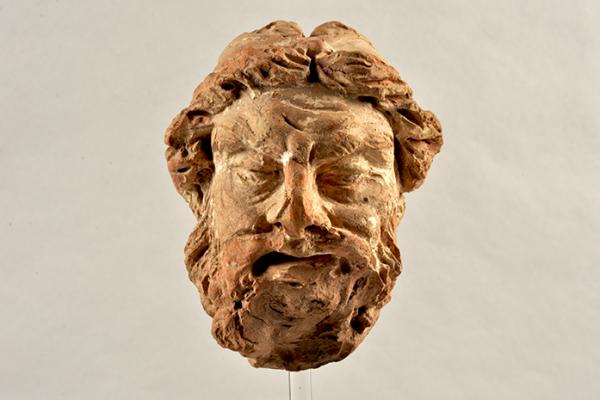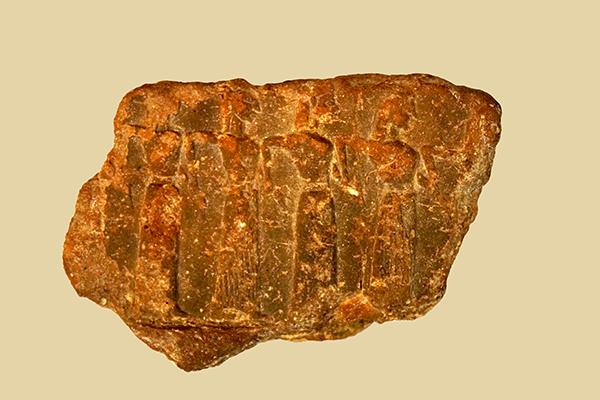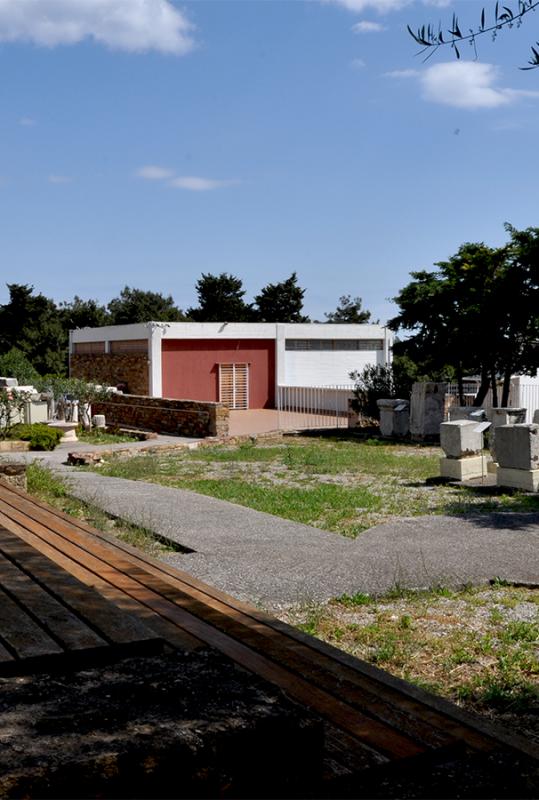Created by architects Suzanna and Dimitris Antonakakis, the Archaeological Museum of Chios is a representative example of Greek architecture in the 1960’s, with the dominance of volumes and the quest for natural light. Concrete and glass blend harmoniously with the local rock from the region of Thymiana, which envelops the external walls of the museum. The permanent exhibition is entitled “Chios, the seaside city of Inopion” and includes representative artifacts related to art and everyday life in Chios, dating from the Late Neolithic period when the earliest evidence of human presence in the island was found up to the late Roman period. All these finds reveal the role played by Chios in antiquity. At the museum’s yard, the visitor can admire a restored ‘Macedonian type’ tomb. The Archaeological Museum opens its doors daily, except for Tuesdays, from 8:30 a.m. to 3:30 p.m. during winter months and from 8:30 a.m. to 4:30 p.m. during summer months. The full ticket costs 2 Euros and the reduced ticket 1 Euro.
3. The Archaeological Museum of Chios
The Archaeological Museum of Chios boasts many artifacts, alluding to the relation that Homer had with the island.
Stories
The Museum
Homeric settlements
Archaeological excavations revealed that Homeric epics offer rich information on life during the Mycenaean era (when the events of the Iliad and the Odyssey took place), as well as the Geometric period, which was Homer’s time. At Chios, the excavations brought to light Mycenaean settlements at Emporio and Fana, while Mycenaean tombs were unearthed at Archontiki, on the island of Psara. At Emporio and Fana, which had developed particularly in Homer’s day (8th c. B.C.), cult statues were found, as well as vases, figurines, spinning weights, seals and music instruments, reflecting the everyday life and art described in the Homeric epics. The most important Homeric settlement seems to have existed at the same site where the city of Chios lies today.
A clay head belonging to Homer

The collection of the Archaeological Museum includes a clay figurine head, probably depicting Homer, who was worshiped as a local hero on the island. This male clay head, although largely destroyed, was discovered in 1952 during an excavation by the British School of Archaeology at Kofinas, a neighborhood in the city of Chios. Archaeologists believe that this head depicting a pensive, blind man represents Homer who, according to tradition, was blind. J.K. Anderson, a member of the excavating team, mentions that when looking at this find, one can identify ‘the blind man living in mountainous Chios’. The figurine can be seen in hall 2 of the permanent exhibition.
Women’s dance

Hall 4 of the museum hosts part of a relief pithos discovered during excavations in the city of Chios and dating in the 6th c. BC. It represents a group of women dancing hand in hand, dressed in long chitons with belts. Their dance is reminiscent of the dance decorating the shield that god Hephaestus forged for Achilles, so that he could fight Hector and that Homer describes so vividly in the 18th rhapsody of the Iliad. “And there were young men on it and young girls, sought for their beauty with gifts of oxen, dancing, and holding hands at the wrist. These wore, the maidens long light robes, but the men wore tunics of finespun work and shining softly, touched with olive oil. And the girls wore fair garlands on their heads, while the young men carried golden knives that hung from sword-belts of silver”
A catalogue of ships

Ancient Greek training was based on forging the mind and body through exercise and poetry being the core of education for young boys. The youth studied the poetry of Homer, intending not only to learn how to read and write, but also recite verses from the Iliad and the Odyssey, thus understanding the poet’s greatness. They would memorize different parts of the poem, like the one found on a marble inscription recording the catalogue of ships that sailed to take part in the Trojan War. This inscription, belonging to the museum’s collection, dates to the 3rd century B.C. and was retrieved inside the wall of a small house close to Saint George’s church, in the castle of Chios (the so-called Frourio). The inscription corresponds to verses 603-670 of the Iliad’s 2nd rhapsody and it preserves only twelve lines, mentioning the number of ships and the name of each fleet’s captain, such as Ulysses who participated with 12 ships and Idomeneus who disposed 90 Cretan ships to the war. This inscription served educational purposes and it attests to the fact that Homer was also taught in Chios.
Powered by Clio Muse Tours
